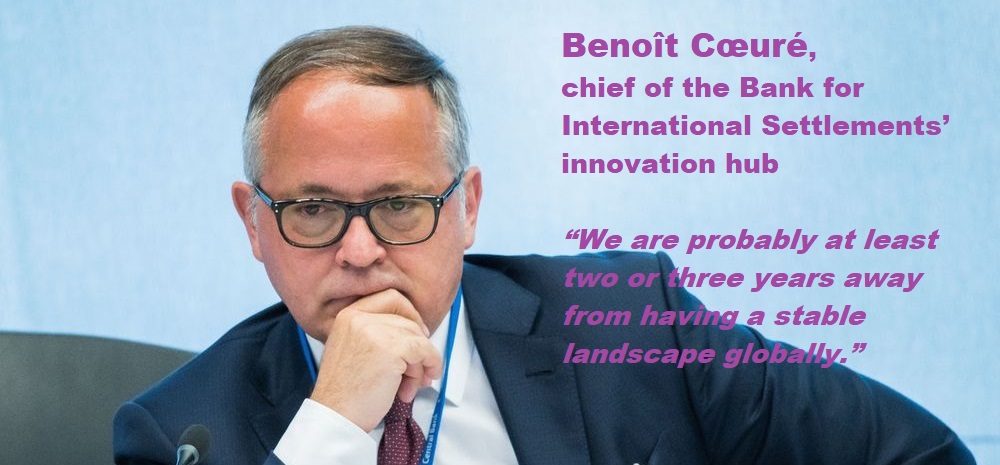Chief of the Bank for International Settlements’ innovation hub says regulators likely to agree crypto framework in 2022

The Financial Stability Board, a global grouping of finance ministries and regulators hosted by BIS, would be the most natural forum to agree a consistent framework and that it was possible for them to do it in 2022, though he cautioned that “we are probably at least two or three years away from having a stable landscape globally” since it will take time for countries to adopt the measures, says Benoît Cœuré, chief of the Bank for International Settlements’ innovation hub.
Financial regulators should agree a global framework for crypto next year after the rapid growth of decentralised finance gave them a “wake-up call”, Benoît Cœuré told the Financial Times.
Cœuré said the new “wake-up call” was decentralised finance — a rapidly growing corner of the cryptocurrency market that uses distributed ledger technology and so-called “smart contracts” to carry out billions of dollars worth of transactions without a central hub like an exchange.
Decentralised finance, or DeFi as it is known, “opens new avenues . . . for interconnectedness with traditional finance which creates potentially new forms of systemic risk” that regulators can no longer ignore, Cœuré said, pointing out that DeFi connected with both stablecoins, widely used as a settlement instrument on DeFi platforms, and traditional finance.
“These [new] services will be competing with traditional finance, and money will flow in and out from one universe to another. This creates a compelling reason to start a discussion on global principles for crypto regulation.” The pace at which rules are developing in individual jurisdictions is also strengthening the urgency for delivering a global framework.
He added that the crypto framework could include agreements on categories for different activities and deciding whether a stablecoin — a form of cryptocurrency backed by traditional assets like the dollar — is electronic money, a money-market fund or a security. It should also include guidance so “service providers in these ecosystems and platforms are regulated according to the services they are providing”.
He also said policymakers were increasingly aware that central bank digital currency “should not be treated as a separate discussion” or allowed to stay in the separate track where it has developed. “We’re seeing the discussion pivoting . . . towards CBDC (central bank digital currency) being . . . a foundational contribution to the new ecosystem,” he said.
“You need central bank money as a safe asset that can be used as a settlement asset to make the new system stable . . . It’s not about CBDC being the sovereign alternative to private money, it’s more about CBDC being the glue that will hold the system together.”
Dariusz Mazurkiewicz – CEO at BLIK Polish Payment Standard
Banking 4.0 – „how was the experience for you”
„To be honest I think that Sinaia, your conference, is much better then Davos.”
Many more interesting quotes in the video below:











